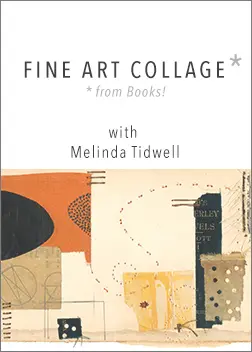Class Description
Fine Art Collage with Melinda Tidwell
This class is part treasure hunt, part deconstruction and discovery, and part reconstruction and art-making. We will be using used books for our raw material so your journey begins at the thrift store and ends with some surprisingly cool pieces of art. Every part of this journey is interesting and fun.
We will be deconstructing both hardback and paperback old books to mine them for materials for collage. We look at design principles for abstract composition, a bit of technique for gluing, and then a myriad of ways to alter book materials including: cutting, tearing, sanding, holepunching, sewing, drawing, punctures, etc.
In this three-week, six-lesson class we will work on up to ten small collages. I hope you’ll join me.
Melinda
______________________
Some of Melinda’s collage work:
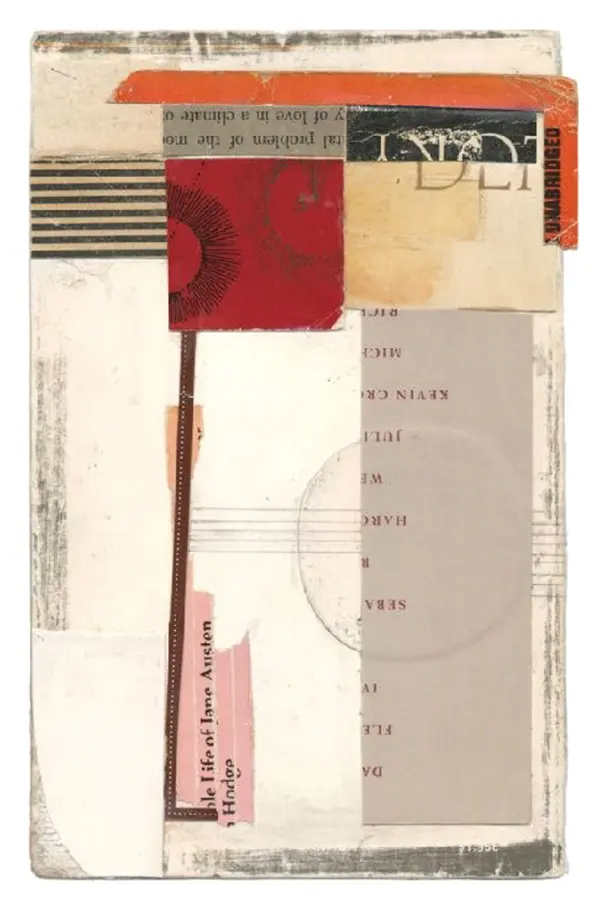
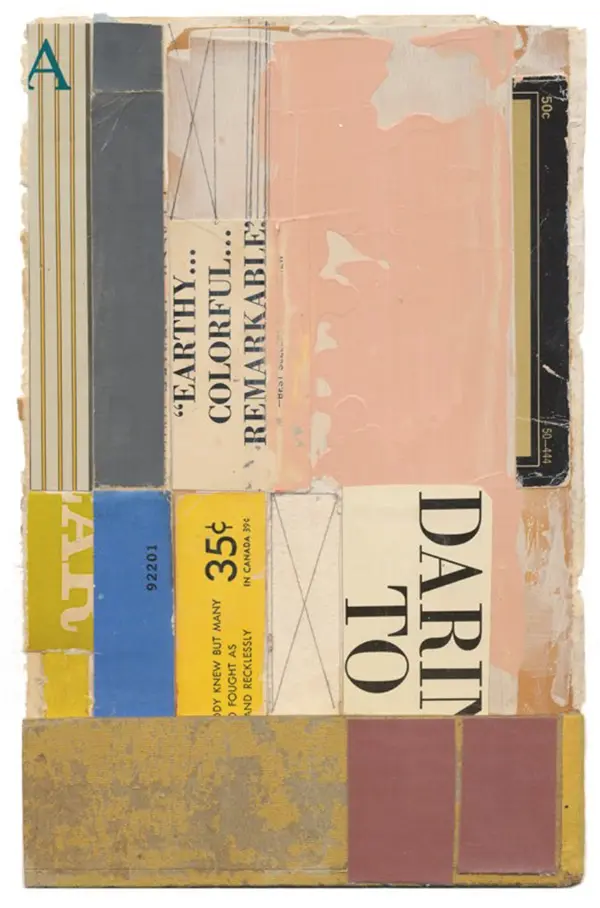
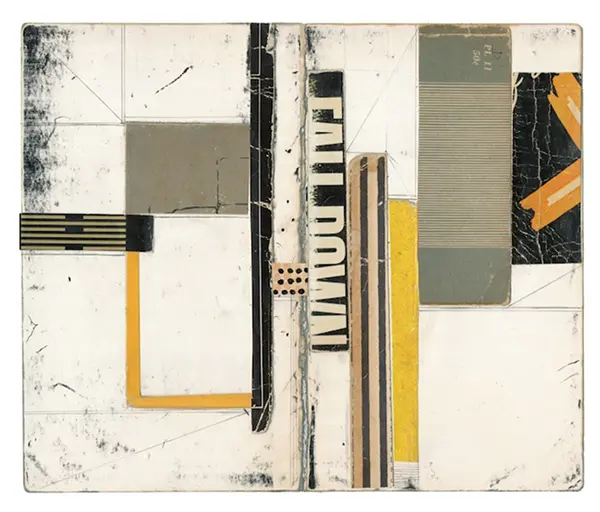
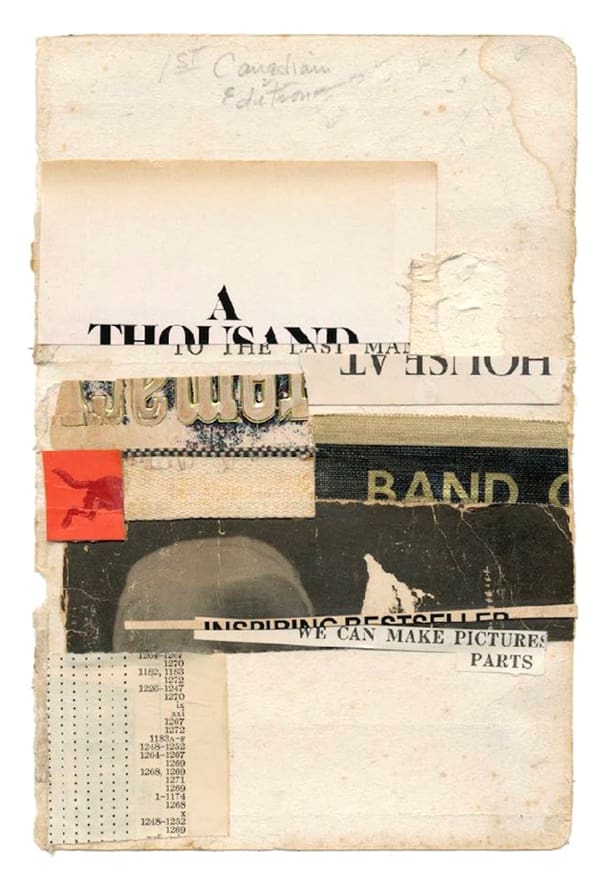
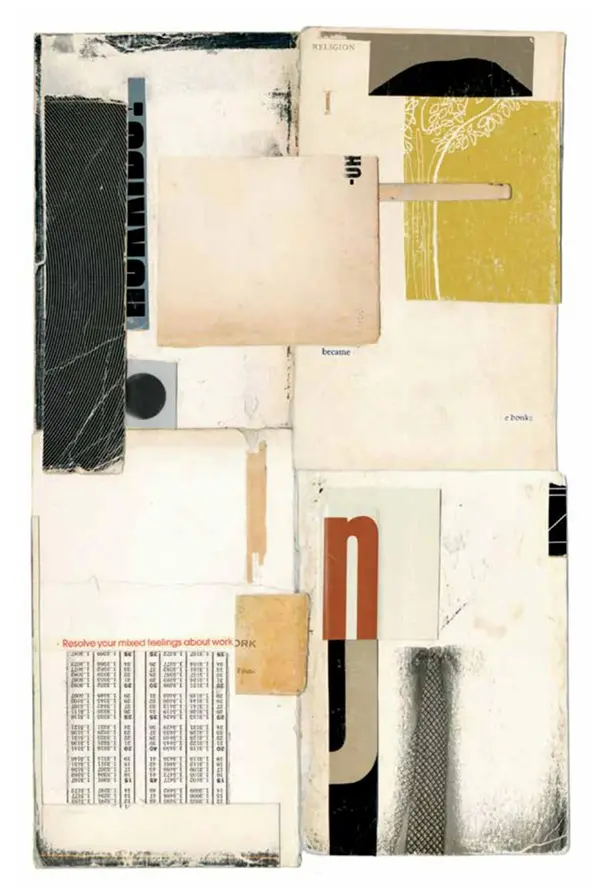
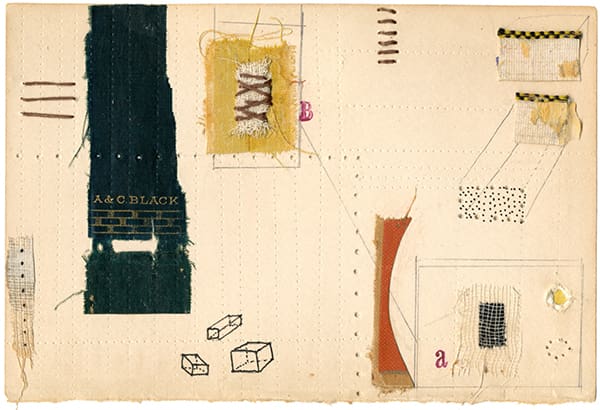
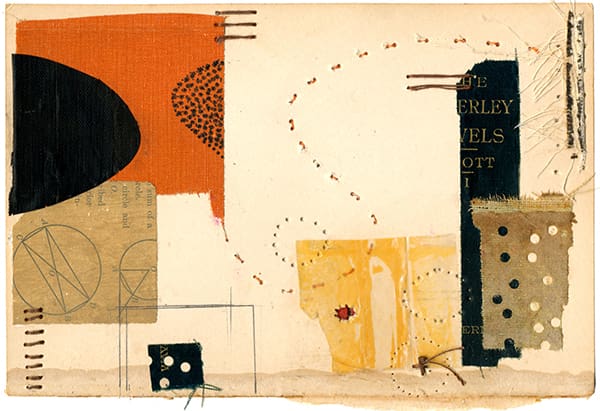
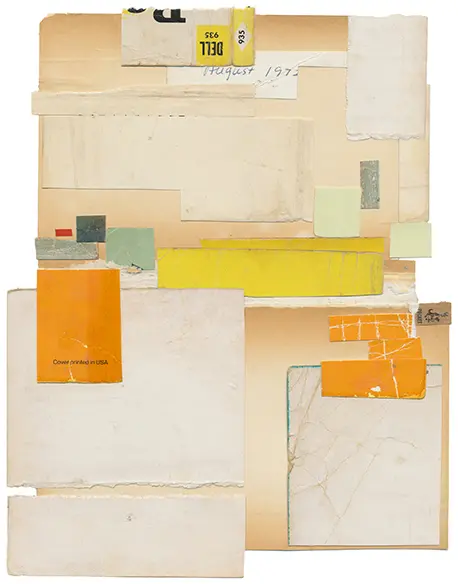
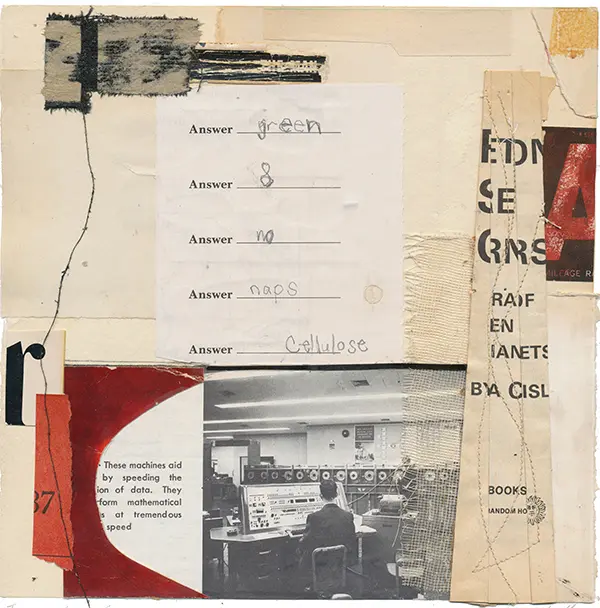
_____________________
Class Itinerary
Lesson 1 – Deconstructing paperbacks. Abstract composition with simple shapes and color.
Old discarded paperbacks have a lot to offer for collage. The covers, made of colorful printed card stock are rich with text, typography and graphics. In this lesson we harvest paperback covers, cut them into simple rectangular shapes, and use them to create our first book collages.
Lesson 2 – Using words and line art.
One of my great joys with using paperback is using the cover text. Pulling out a sentence here and there, besides being funny, can inspire the whole direction of your collage. And remember when you were a kid and novels were illustrated? This lesson combines that vintage line art imagery with small readable text to bring an extra layer of meaning into your collages.
Lesson 3 – Deconstructing hardbacks and exploring shape.
Discarded hardback books, especially old ones, are a treasure trove of materials for collage. In this lesson we deconstruct them into their parts: fabric, bookboard, binding mull; and then use these raw materials to explore shape in a series of collages.
Lesson 4 – Loosening up!
Because collage gives you such quick access to a myriad of options for your composition, it can also twist your brain into knots equally quickly. Decision fatigue sets in and you are no longer having fun. This lesson is meant to disrupt that process, push the reset button, and get you back to play and exploration.
Lesson 5 – Working with photography and title text. Visual weight.
In this lesson we are going to explore the idea of Visual Weight by using some of our heaviest collage elements: photography and title text. Both are bold and can easily overtake your composition. Worry not, they will be subdued!
Lesson 6 – Using line and finishing touches.
For our final lesson, let’s explore relatively quiet additions to your work that can give it a very satisfying intricacy upon closer viewing. Like any good symphony, your work is a combination of loud and soft passages mixing together. We will look at a variety of ways to add Line, and also quick refinements for finishing your collage.


